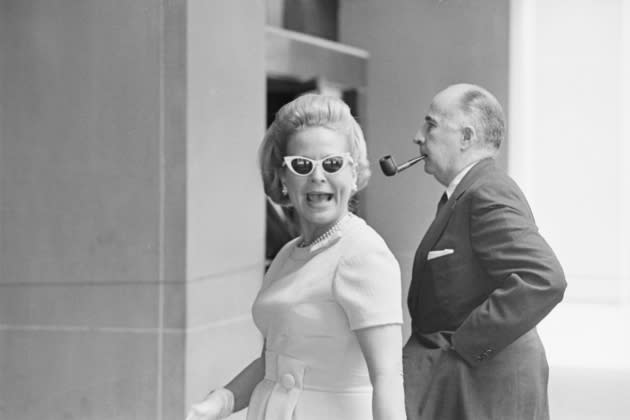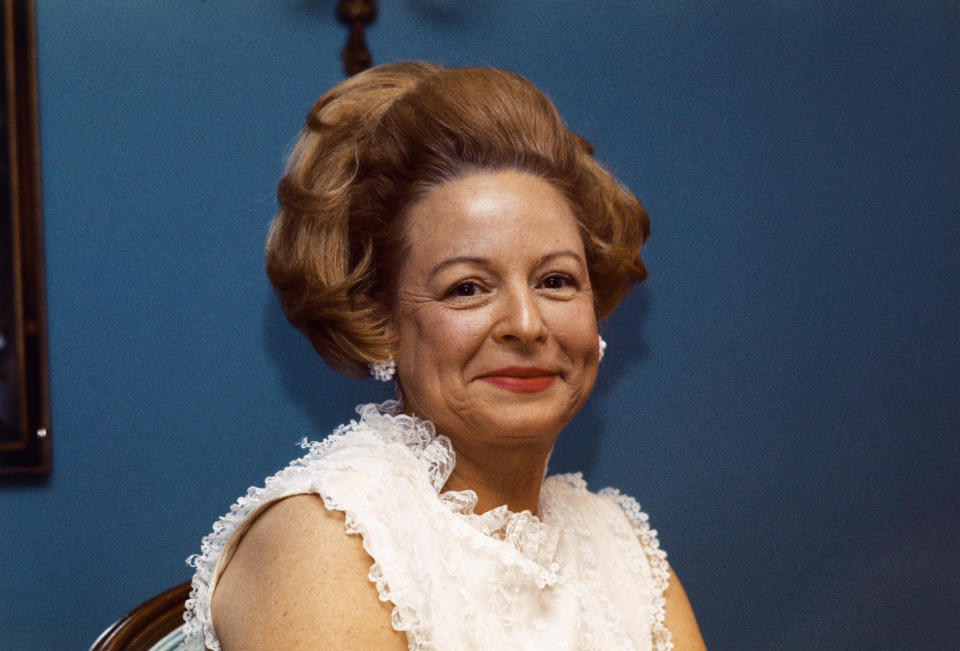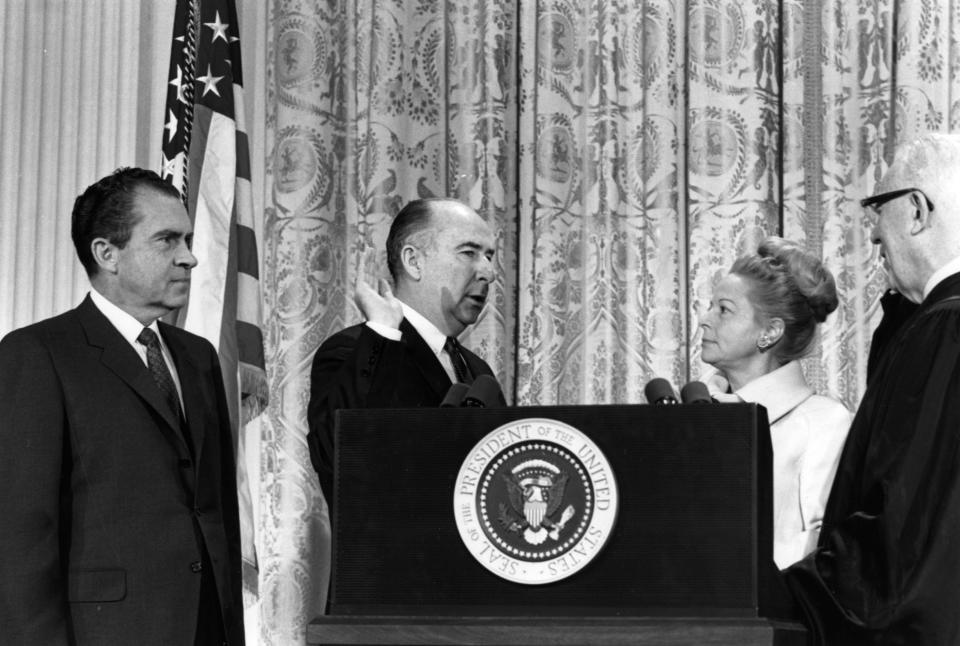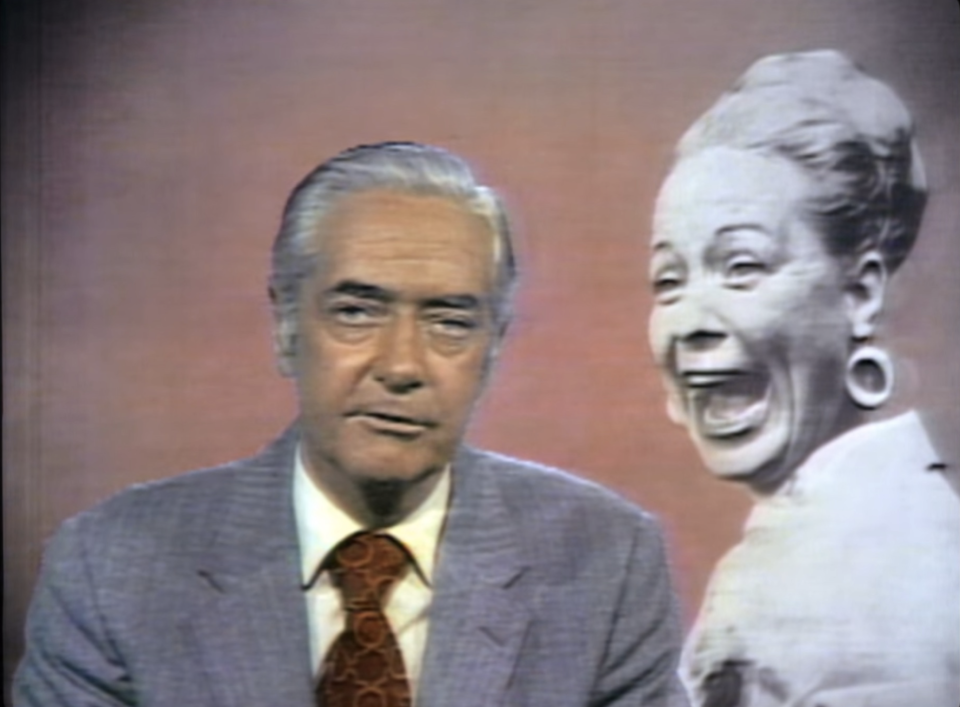Oscar-Contending Documentary ‘The Martha Mitchell Effect’ Redeems A Watergate Figure Victimized In A Gaslighting Campaign
- Oops!Something went wrong.Please try again later.
- Oops!Something went wrong.Please try again later.
- Oops!Something went wrong.Please try again later.

At the beginning of the Netflix documentary The Martha Mitchell Effect, Richard Nixon, deflated in his ex-presidential phase, sits for an interview with David Frost. A somber Nixon tells his natty interlocutor, “I’m convinced if it hadn’t been for Martha, there’d have been no Watergate.”
What he really meant, one can imagine, is that were it not for Martha Mitchell, Watergate wouldn’t have become the scandal that ended his presidency.
More from Deadline
Tyler Perry Sets Next Film At Netflix: 'Six Triple Eight' About Only All-Black Female WWII Battalion
'The Decameron': Tony Hale, Zosia Mamet & Tanya Reynolds Among 10 Cast In Netflix Series
'White Noise': Read The Screenplay For Noah Baumbach's Take On Don DeLillo's Novel
But as the documentary illustrates, blaming Martha Mitchell, obsessing over her, ridiculing and besmirching her had long and troubling antecedents to that Nixon interview. Generations born after Watergate don’t realize how much the mere mention of Attorney General John Mitchell’s wife set tongues wagging in Washington and across the country. The film directed by Anne Alvergue and Debra McClutchy is an Oscar contender for Best Documentary Short.

The directors didn’t know about Mitchell before they learned of her through a podcast.
“The more digging we did, the more we realized, oh, there is a reason why we didn’t hear about her,” Alvergue tells Deadline. “She was essentially a victim of a gaslighting campaign from the Nixon administration to silence her and stop shedding the spotlight on the Watergate scandal at the time. We thought, this is truly a hidden figure in history, and there’s never been a documentary about her. We were at the time on the heels of Trump and two impeachments and the MeToo movement, and we thought it was a perfect time to exhume her story.”
Mitchell married John Mitchell, a high-powered New York lawyer, several years before he and Nixon merged their law firms in 1966. When Nixon was elected president in 1968 he tapped John Mitchell as his attorney general, and Martha and her husband took up residency in D.C.—at the Watergate Hotel.

Martha possessed attributes that augured success as a “cabinet wife”—beauty, charm, an outgoing personality. But one quality made her unusual for a woman of that time: a penchant for speaking her mind, whether to powerful officials or to reporters.
“Women who were part of the Washington social scene were hostesses,” author and Washington Post columnist Sally Quinn observes in the documentary. “Women went into the other room and had coffee while the men talked about the important things. But Martha Mitchell wasn’t playing the Washington game. She wasn’t going to be the wife that just sits in the background not saying anything.”
Her propensity to speak with journalists on camera or over the phone came to irk Nixon, who conveniently left a record of his thoughts through his secret White House tapes.
“She’s always a pain in the ass,” he groused in one excerpt used in the film. “It scares me. I just can’t stand it.”
“We were very lucky in that, often, you only have one side of these stories,” McClutchy notes, “but we had both because we had access to these White House audiotapes, so we really could get a fuller picture from both sides.”

John Mitchell resigned as attorney general in 1972 to run Nixon’s reelection campaign. Whether or not Martha Mitchell had knowledge of it, her husband participated in planning meetings for the Watergate break-in and took part in the coverup. When news of the burglary began to leak, the Mitchells were visiting California; John Mitchell flew back to Washington and his wife would claim that she was held prisoner in a hotel room, on her husband’s orders, so she wouldn’t hear of the break-in or talk to the media. A bodyguard, Steve King, allegedly kept her under wraps in that hotel room and yanked out a telephone cord when a reporter tried to reach her.
Martha eventually told reporters about her captivity, but the White House spread the story that she was mentally unstable and a drunk. Watergate burglar James McCord, who had known and worked with the Mitchells at one point, later revealed that Martha’s account of being held captive was true.
“Even though McCord confirmed it in 1975, the larger public was in a state of disbelief about that story until a couple of years ago,” Alvergue says. “I think part of that is because Steve King, who was the bodyguard who eventually became the U.S. ambassador to the Czech Republic under Trump, would always deny it. Although we did find an interview, which we don’t use in the film, of a reporter in the Czech Republic who asks King specifically about the incident. And he confirmed that he was there [at the hotel]. It’s not that he would corroborate everything, because he doesn’t want to appear culpable. And obviously he took orders from people above him in terms of that [incident]. But it’s kind of amazing that Martha wasn’t believed for so long.”

Martha Mitchell consistently maintained that Nixon was responsible for the Watergate break-in and the coverup. History would prove her contentions correct, at least to most observers. But the smear campaign against her—and the evident zeal of television commentators to dismiss her as the outlandish “mouth that roared,” reduced her to caricature. John Mitchell ultimately abandoned his wife. The directors see the star-crossed Nixon-John Mitchell-Martha Mitchell relationship as a love triangle.
“It’s a love triangle in that Nixon wanted John Mitchell’s attention. And Martha wanted John Mitchell’s attention. So, there was a competitiveness there that was happening and perhaps a jealousy that was happening,” McClutchy says. “This story is really about the personal fallout for Martha in terms of her love affair with her husband. They were together for 16 years. And then John Mitchell chose Nixon over his wife, over the love of his life. There was no loyalty to her. It’s really a tragic personal story in that sense.”

Martha Mitchell died of multiple myeloma in 1976, at the age of 57. The Martha Mitchell Effect documentary was begun well before the arrival of the recent Starz miniseries Gaslit in which Julia Roberts plays Mitchell.
“It was just great to see Martha get the attention in such a huge way,” McClutchy comments. “The miniseries really cast a spotlight on her, which actually was really great for our film, too, because I feel like people may have seen that miniseries and then they thought, ‘Oh, I want to see the real Martha Mitchell’ and found us on Netflix. There was a good synergy there.”
And as for the title? Alvergue explains its meaning.
“The Martha Mitchell Effect is a condition that was coined by Harvard psychologist Brendan Mayer in the late ’80s. And it was based on Martha Mitchell herself,” Alvergue says. The idea is that it’s a situation when a clinical psychologist or psychiatrist deems their patient delusional when in fact, they were telling the truth all along.”
Best of Deadline
Sign up for Deadline's Newsletter. For the latest news, follow us on Facebook, Twitter, and Instagram.

